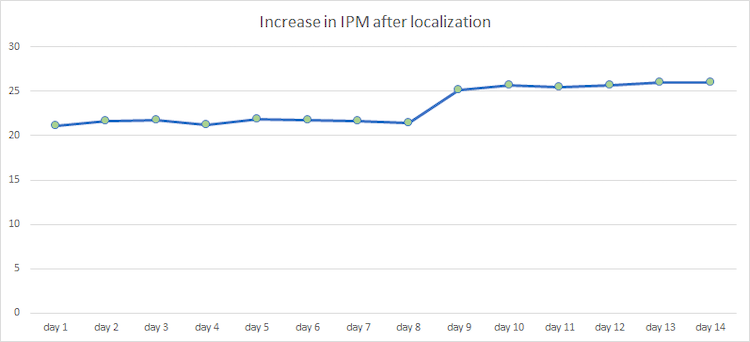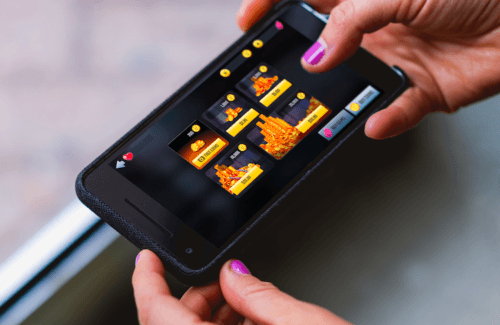You’ve made the decision to take a mobile game or app global. Great. Now comes the time to decide what type and level of ad creative customization is needed for each new target geo. Yet in a world where consumers are becoming increasingly homogenous, how local do you actually need to go?
There are the well-known global branding pitfalls – such as Pepsi’s “Pepsi Brings You Back to Life” slogan being launched in China as “Pepsi Brings You Back from the Grave” – which marketers nowadays are (hopefully) savvy enough not to fall into. While we may know the no-gos, understanding how to adapt your ads to positively affect your ROI is the harder part of the equation. Based on data we’ve collected, here’s our takeaway of how each of the four customization categories – translation, design, ad unit and ad difficulty – impact (or don’t impact) your key marketing KPIs.
Translation
When it comes to increasing your install rate, serving an ad in a local language is the go-to customization tactic. People want to see an ad in their local language, right? “Sometimes” is actually the right answer. This strategy works great in some countries and less well in others.
Let’s start with where it works. Ads in France, Germany, China, Japan and Korea all see significant impact when served in the local language. For example, a playable rewarded video ad in China for a well-known hyper-casual game might see a 10-15% increase in the number of app installs per thousand ad impressions and a 40% increase in CTR with little effect on CVR if the ad is translated into Chinese.
However, in another A/B test for a different title, the insights might be a bit different. While translation may cause the expected increase in the number of app installs per thousand ad impressions, CTR might not be majorly impacted, however CVR may see a significant increase. In both cases the IPM (installs per thousand impressions) may increase, but importantly it might be a case of quality of over quantity or vice versa depending on whether CTR or CVR rise.
In many other countries, translation actually has little to no effect. Even more surprising is how in some countries, like Brazil, translation has a negative effect, and English in-app ads have consistently proven to convert better than those in Portuguese.
Design
After translation, design is a central part of ad localization. Again, the countries most impacted by localized design are those in China, Japan and Korea. Take China, for example, where adding cultural symbols like golden cats, the color red, and dragons, can significantly improve IPM and CTR. As with translations, being culturally sensitive with design is also a huge consideration.
It’s not just about localizing the art to local tastes, but also about running creatives for country-specific holidays. Titles which localize their ads for holidays such as Thanksgiving and Singles Day, see a huge 5-15% jump in their IPM.
Ad units
After testing different ad units in different countries, our data shows that users in the US, England and Germany engage better with longer ad formats. In general, however, we’re more or less homogenous across the globe in terms of our ad engagement behavior. To ensure the best results globally then, opt for high-impact, interactive ad formats like playable or interactive rewarded video ads, which result in higher engagement and completion rates, and most importantly in positive brand recall.
An added benefit to running interactive ads is that marketers are able to optimize a much wider array of elements versus standard video or static ads. With an interactive ad, measurement goes beyond the impression and the click to all the different touchpoints inside the ad itself, allowing marketers to track the in-ad funnel and optimize it for further engagement and completion.
Ad difficulty
In this dimension, there are no differences between geos, but rather the differences appear within game genres, with certain categories working best with ads of a specific length or difficulty level.
What does have a huge impact, however, is the animation of the ad. In Asia, it’s all about high impact – screen shakes, shiny objects, animations, spins, explosions, flickering. The wilder the better. These micro-innovations inside of the ad are often reflected inside of the game itself, with many developers choosing to go a step further and localize their gameplay for the Asian market using these techniques.
When it comes to going global, ad localization may be less complicated than you think. The key is to know how affected your target geo is by each of the key factors above and then to take your localization from there. Then regardless of geo, the ultimate tactic for optimal results is to test, test, iterate, and then keep on testing.













